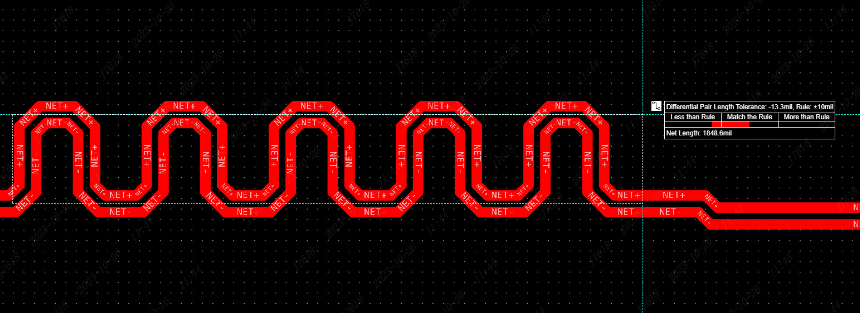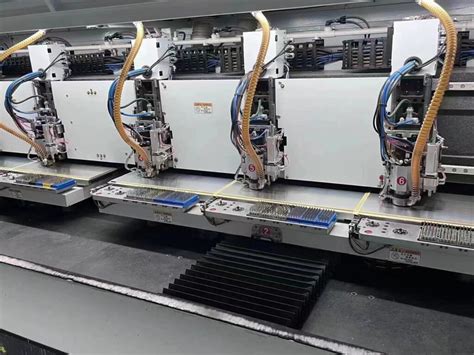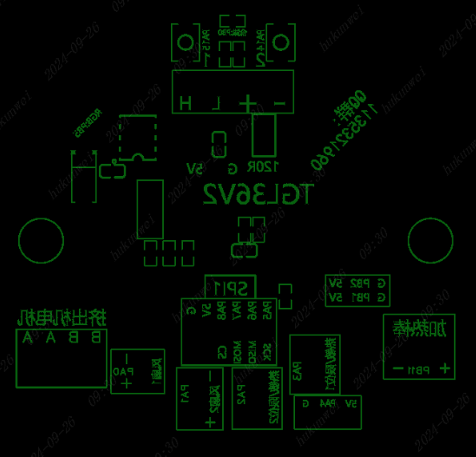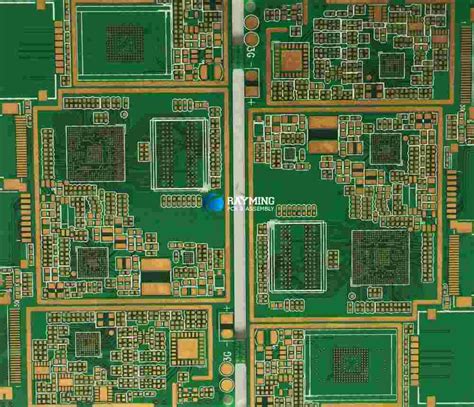The Importance of Snake Routing in PCB Design
Introduction
Printed Circuit Board (PCB) design is a complex engineering discipline that requires careful consideration of numerous factors to ensure optimal performance, reliability, and manufacturability. Among the various routing techniques employed by PCB designers, snake routing (or serpentine routing) stands out as a particularly valuable strategy in many scenarios. This article explores the reasons why snake routing is essential in modern PCB design, examining its applications, benefits, and implementation considerations across approximately 2000 words.
Understanding Snake Routing
Snake routing refers to the practice of intentionally introducing meandering or serpentine traces in a PCB layout rather than using straight-line connections between components. These wavy traces resemble the slithering path of a snake, hence the name. While at first glance this might appear counterintuitive—after all, conventional wisdom suggests that the shortest path between two points is generally preferable—snake routing serves several critical purposes in high-speed and high-performance PCB designs.

Key Reasons for Using Snake Routing
1. Timing Alignment in High-Speed Digital Circuits
One of the primary reasons for employing snake routing is to manage signal timing in high-speed digital systems, particularly those with parallel buses or differential pairs.
Clock Signal Synchronization: In synchronous digital systems, multiple signals must arrive at their destinations simultaneously to ensure proper operation. When signals travel different physical distances across a PCB, they naturally experience different propagation delays. Snake routing allows designers to add deliberate length to shorter traces, equalizing the electrical length of all relevant signals.
DDR Memory Interfaces: Modern DDR memory systems are particularly sensitive to timing mismatches. Snake routing helps maintain proper alignment between data lines, address lines, and clock signals, which is crucial for achieving the high data rates demanded by contemporary computing systems.
Differential Pair Length Matching: For high-speed differential signaling (such as USB, HDMI, or PCIe), maintaining identical lengths for both traces in a pair is essential to preserve signal integrity. Snake routing provides the means to achieve this precise length matching.
2. Impedance Control and Signal Integrity
Proper impedance control is vital for maintaining signal integrity, especially in high-frequency applications.
Uniform Impedance Maintenance: Straight traces often require width adjustments when navigating around obstacles or transitioning between layers, which can cause impedance variations. Snake routing can help maintain more consistent trace geometry, leading to better impedance control along the entire signal path.
Reduction of Sharp Corners: Traditional 90-degree turns in PCB traces can cause signal reflections and impedance discontinuities. The gentle curves characteristic of snake routing minimize these issues, especially when designed with appropriate curvature radii based on the signal frequency.
3. Electromagnetic Interference (EMI) Reduction
PCB designers must constantly battle EMI concerns, both as potential sources and victims of interference.
Controlled Radiated Emissions: Straight, parallel traces can act as efficient antennas, radiating electromagnetic energy. The alternating current directions in snake traces tend to cancel out some of this radiation, reducing overall EMI.
Cross-Talk Mitigation: The non-parallel nature of snake routed traces helps minimize capacitive and inductive coupling between adjacent signals compared to long, straight parallel runs.
4. Thermal Management Considerations
While not its primary purpose, snake routing can influence thermal performance in certain scenarios.
Distributed Heat Dissipation: For traces carrying significant current, snake routing can help distribute heat more evenly across the PCB rather than concentrating it in specific areas.
Thermal Stress Relief: The flexibility inherent in snake-style traces can better accommodate thermal expansion and contraction, reducing mechanical stress on the PCB and components.
5. Manufacturing and Reliability Benefits
Snake routing offers several advantages from a manufacturing and long-term reliability perspective.
Etching Uniformity: The more consistent trace widths and spacing in snake routing patterns can improve etching consistency during PCB fabrication.
Stress Reduction: The absence of sharp angles reduces points of mechanical stress that could become failure points over time or under vibration.
Aesthetics and Identification: While not a technical benefit, snake routed traces are often easier to visually identify and distinguish from other traces during debugging or rework.

Implementation Considerations for Snake Routing
While snake routing offers numerous benefits, its implementation requires careful consideration of several factors:
1. Frequency-Dependent Design
The effectiveness and necessary parameters of snake routing vary significantly with signal frequency:
Low-Frequency Signals (DC-1MHz): Generally don’t require snake routing unless for length matching in parallel buses.
Medium-Frequency (1MHz-100MHz): Begin to benefit from gentle snake routing for impedance consistency.
High-Frequency (100MHz+): Require carefully designed snake routing with proper curvature and spacing to maintain signal integrity.
2. Space Constraints
Snake routing inevitably consumes more board space than direct routing:
Density Trade-offs: Designers must balance the benefits of snake routing against the increased real estate requirements.
Layer Utilization: Often implemented on outer layers where space is more available or strategically planned in inner layers during stackup design.
3. Routing Parameters
Effective snake routing requires attention to specific geometric parameters:
Amplitude and Period: The height and frequency of the meanders affect both the added length and the electromagnetic properties.
Corner Radius: Larger radii are generally better for high-speed signals to minimize discontinuities.
Spacing Between Segments: Adequate spacing prevents unintended coupling between adjacent sections of the snake trace.
4. Signal Type Considerations
Different signal types benefit from customized snake routing approaches:
Single-Ended Signals: Require careful attention to spacing from other traces and ground references.
Differential Pairs: Need matched snake patterns for both positive and negative traces with maintained consistent spacing.
Clock Signals: Often benefit from more conservative snake routing parameters due to their critical timing role.

Advanced Applications of Snake Routing
Beyond basic length matching, snake routing finds application in several advanced PCB design scenarios:
1. Delay Line Implementation
In some RF and high-speed digital designs, precise timing delays are required. Carefully calculated snake routing can serve as an economical alternative to discrete delay components.
2. Antenna Design
Certain types of PCB antennas utilize snake routing patterns to achieve desired radiation characteristics within limited board space.
3. Filter Implementation
The distributed capacitance and inductance of snake traces can be exploited to create simple low-pass or band-stop filters in some applications.
4. Transmission Line Effects Management
For very high-frequency designs (into the GHz range), snake routing can help manage transmission line effects by controlling propagation velocity and phase relationships.
Common Mistakes to Avoid
While implementing snake routing, designers should be wary of several potential pitfalls:
- Over-Routing: Adding excessive length can degrade signal quality more than it helps timing alignment.
- Insufficient Spacing: Placing snake segments too close together can introduce unwanted coupling.
- Improper Layer Transitions: Neglecting the impact of vias when routing snakes across multiple layers.
- Ignoring Return Paths: Failing to consider how snake routing affects current return paths, especially in high-speed designs.
- Manufacturing Tolerance Neglect: Not accounting for fabrication tolerances that might affect the final electrical length of snake traces.
Tools and Techniques for Effective Snake Routing
Modern PCB design software provides various tools to facilitate proper snake routing:
- Auto-Length Matching: Many ECAD packages offer automated length-tuning features that implement optimized snake routing.
- Constraint Managers: Allow precise control over snake routing parameters as part of overall design rules.
- 3D Electromagnetic Simulation: Helps verify snake routing performance before fabrication.
- Template Libraries: Provide proven snake routing patterns for different applications and frequency ranges.
Future Trends in Snake Routing
As electronic systems continue to evolve, snake routing techniques are adapting to new challenges:
- Higher Frequency Applications: With 5G and millimeter-wave technologies, snake routing at extremely high frequencies requires new design approaches.
- Flex and Rigid-Flex PCBs: Snake routing in flexible circuits presents unique opportunities and challenges.
- Integration with Advanced Materials: New PCB substrates with different dielectric properties influence snake routing strategies.
- AI-Optimized Routing: Machine learning algorithms are beginning to suggest optimal snake routing patterns based on performance requirements.
Conclusion
Snake routing in PCB design is far from being merely an aesthetic choice or a last-resort solution for challenging layouts. It represents a sophisticated engineering technique that addresses fundamental challenges in high-speed digital design, signal integrity, EMI control, and manufacturability. When properly implemented with consideration for the specific requirements of each application, snake routing can significantly enhance PCB performance and reliability. As electronic systems continue to push the boundaries of speed and complexity, the strategic use of snake routing will remain an essential tool in the PCB designer’s toolkit, evolving to meet the demands of next-generation technologies.
The art and science of snake routing exemplify how sometimes, the most effective path between two points isn’t a straight line, but rather a carefully calculated meander that balances numerous engineering considerations to achieve optimal system performance.







